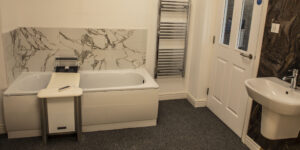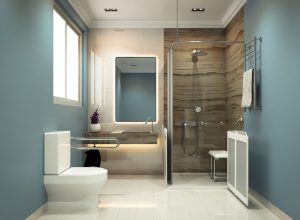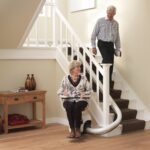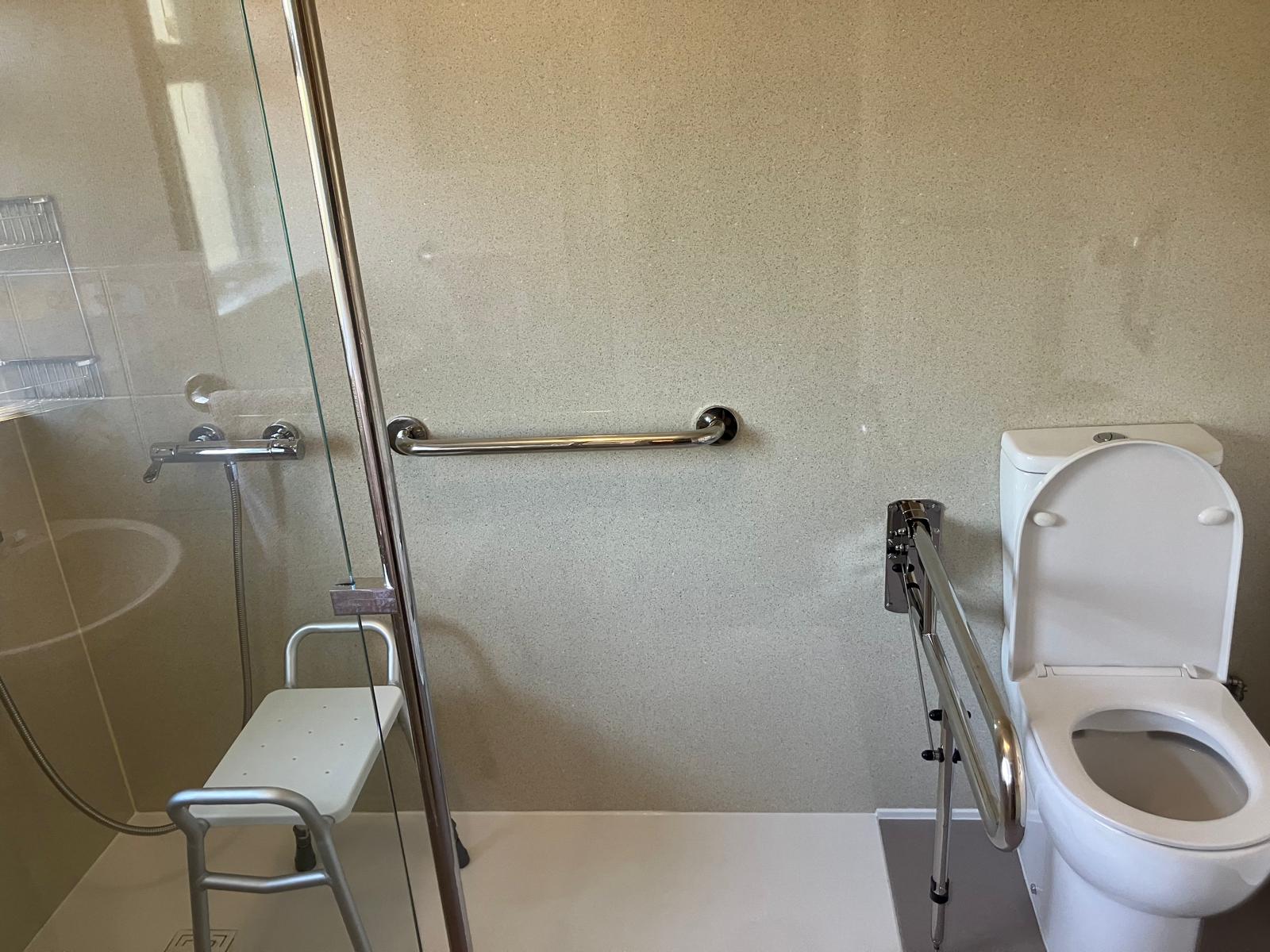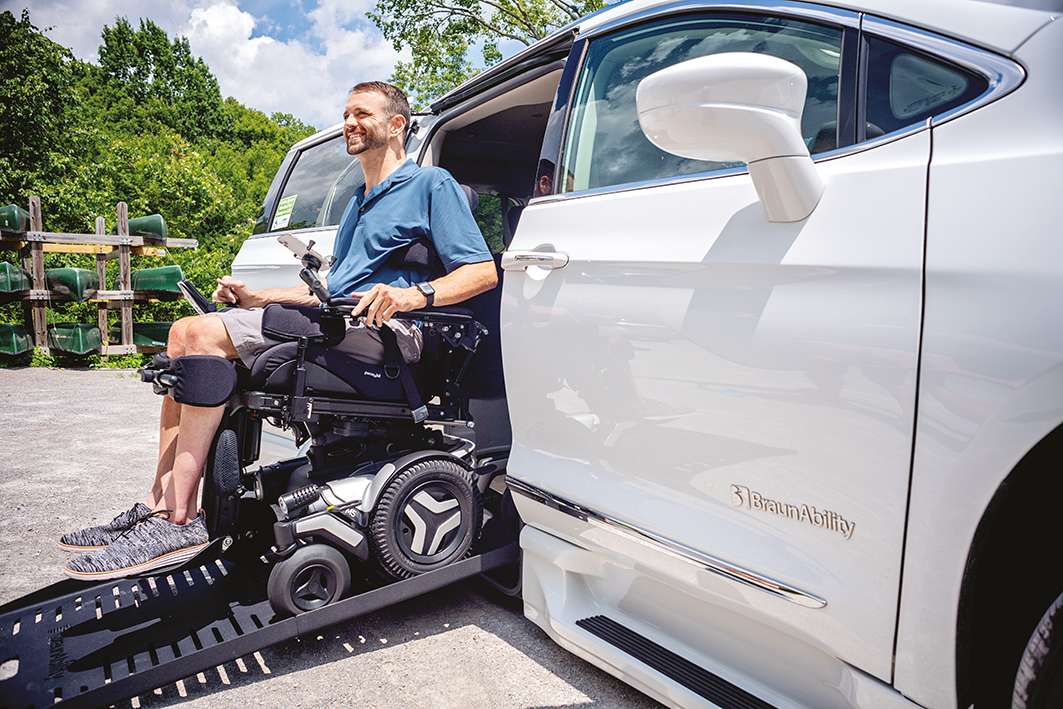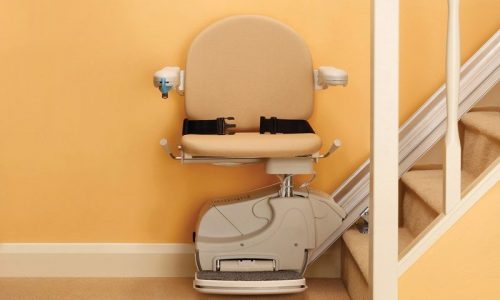Falling in the bathroom is a common hazard for the elderly and infirm who struggle with mobility. With higher temperatures, shampoos and smooth surfaces, adding wet floor surfaces into the mix can create a higher falls risk than other rooms around the home.
If elderly friends and relatives don’t have a carer assisting them, it can become a worry for family members if they take a tumble in the bathroom and can’t be assisted from behind a locked door, potentially increasing the risk of a ‘long lie’ or sustaining an injury.
There are plenty of steps that can be taken to mitigate the risk of falling in the bathroom, with obvious ones like rails and support equipment and others less well known, which we will go through in this article.
Jump straight to…
Facts and Stats
Bathrooms account for a quarter of all falls-related hospitals admissions for elderly people, making it one of the most hazardous rooms in the home.
With our passion for creating accessible bathrooms and spaces in people’s homes, we want to bathrooms to become what they are meant to be for our clients, which is a place of ritual and relaxation, rather than an area of danger for people with mobility challenges.
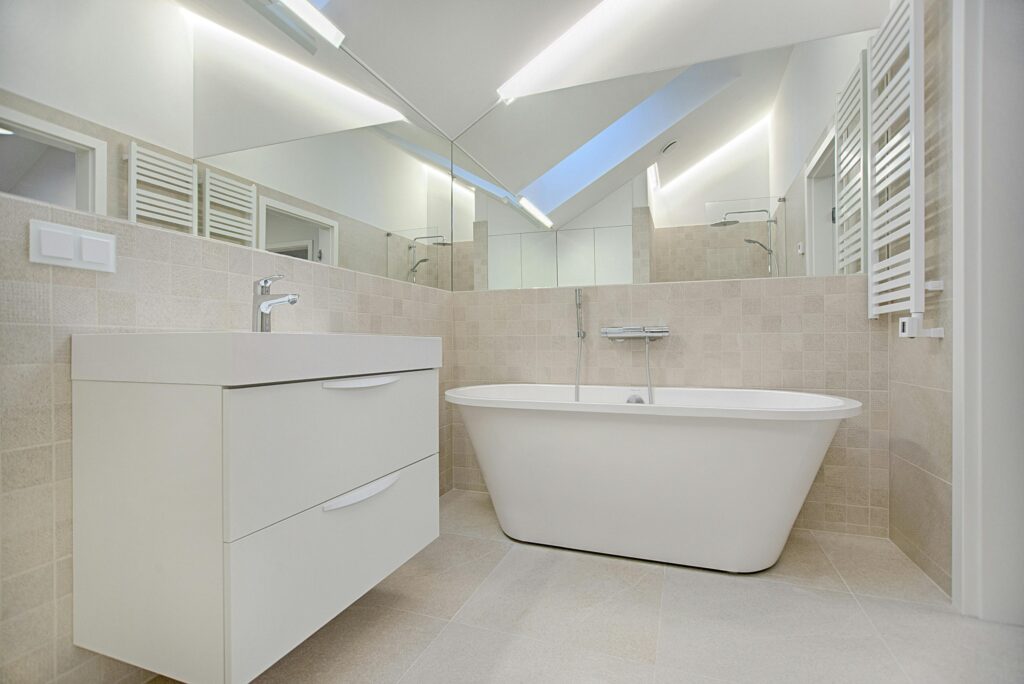
Risk Factors in Bathrooms
So, what are the sources of falls risk in bathrooms? Apart from the obvious ones like slippery tiles and bathmats, here are some others:
- Steps in and out of baths and showers
- Poor lighting
- Heat and steam build-up can make people dizzy or ‘black out’
- Limited space to transfer between the bath/toilet/washbasin.
Aside from the bathroom environment itself, there are some personal factors that can increase falls risk, such as:
- Incontinence — if someone is rushing to the toilet, they are more likely to fall.
- Loss of vision — If someone has blurred or reduced vision, they may not notice any hazards as easily.
- Lower limb weakness — if someone is experiencing muscle weakness in their legs, they may be less able to support themselves on their own. Weakness reduces someone’s ability to support their own weight. So, it is a particularly big risk factor for anyone who gets in and out of the bath unaided.
- Problems with gait (movement & walking) — if someone is struggling to get out of their chair and walk forward unaided, they may be feeling unsteady on their feet. This is sometimes called the ‘get up and go’ test and is often used to assess the risk of falling.
How to Prevent Falls in the Bathroom
As well as having an alarm or alert button if a fall does occur, there are lots of prevention measures that can be put in place to prevent falls happening in the first place.
Aids and Supports
Installing grab rails and support bars at handy locations can help with transitioning between different areas of the bathroom. Not only do grab rails give people something to hold onto, but they increase their confidence by giving them peace of mind that the support is there if they need it.
Suction grab rails use strong vacuum pads to fix themselves to the walls, making them great when staying away from home, for example hotel bathrooms.
The drop-down grab rail can be particularly useful for maintaining balance when standing up from the toilet, for example. Toilet frames are a cheaper and freestanding solution to this issue.
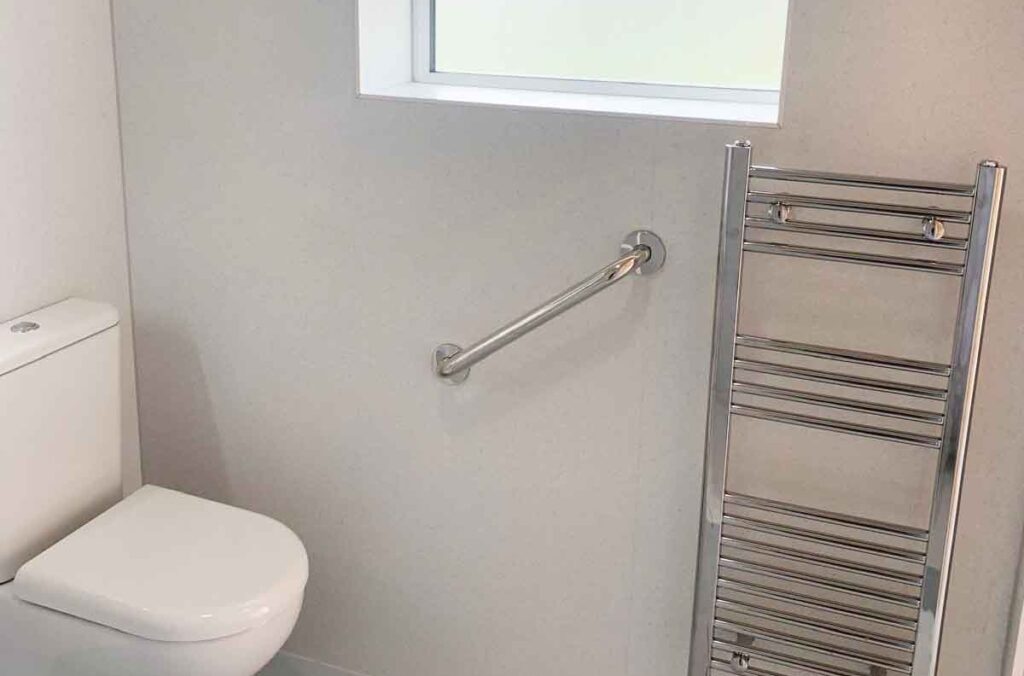
Toilet risers are another useful aid to getting up from the toilet, slowly lifting you up from the seat pan whilst you support yourself with the handrails on either side.
Chrome grab rails attached to tiled walls are handy for that extra bit of stability when showering or bathing.
Shower stools are lightweight and height adjustable, so can be used around the bathroom, when showering or combing hair for example.
A raised toilet seat is a simple but effective falls measure, as a lot of falls can happen from people struggling to get up from toilet seats that are too low.
Bathlifts, either manual or motorised, lift users slowly and safely in and out of the bath.
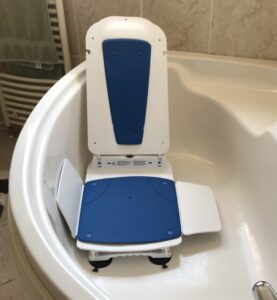
Adaptations
If you have tried the above bathroom aids but are still experiencing falls, it may be time for you to redesign your bathroom to create a more accessible and practical environment. These are some of the standards features of bathrooms adapted for easier accessibility:
Walk-in showers
The shower floor is on the same access level as the rest of the bathroom with no ridges or steps. This also makes a shower chair much easier as it can just be wheeled straight in to the shower cubicle.
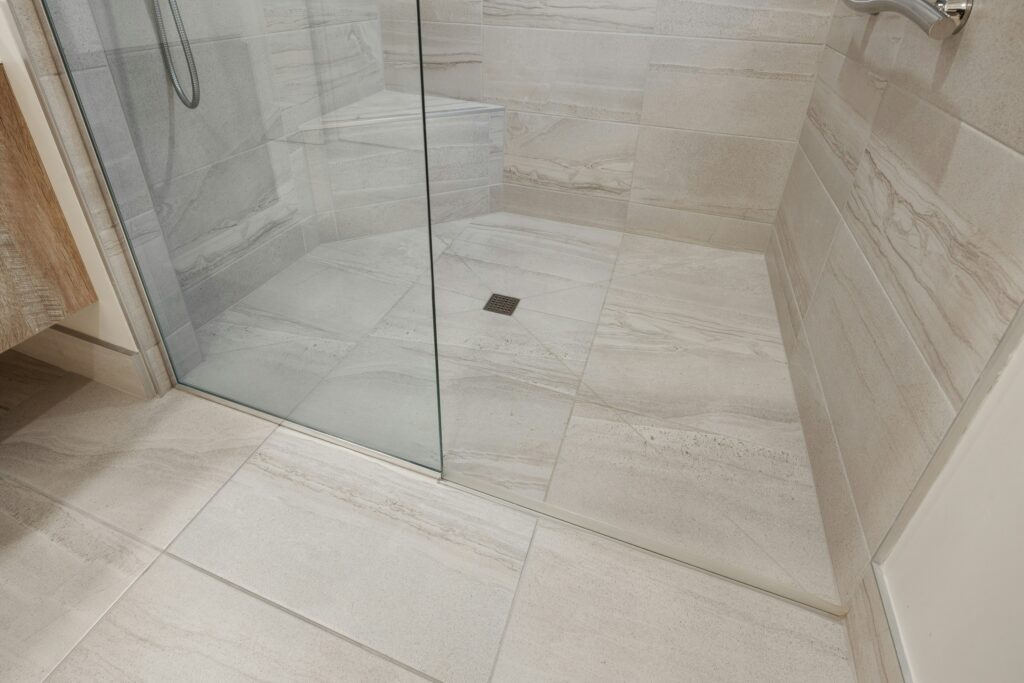
Fully adapted wetrooms
A full wetroom has a continuous level floor surface throughout the whole bathroom, making a fully integrated bathroom space without any barriers such as cubicles or steps which make access more difficult. As well as being easier to move around in, they are easier to clean without the gaps and ridges that separate shower cubicles and baths create. However, attention should be paid to the flooring used to make this as non-slip as possible, which is covered in more detail below.
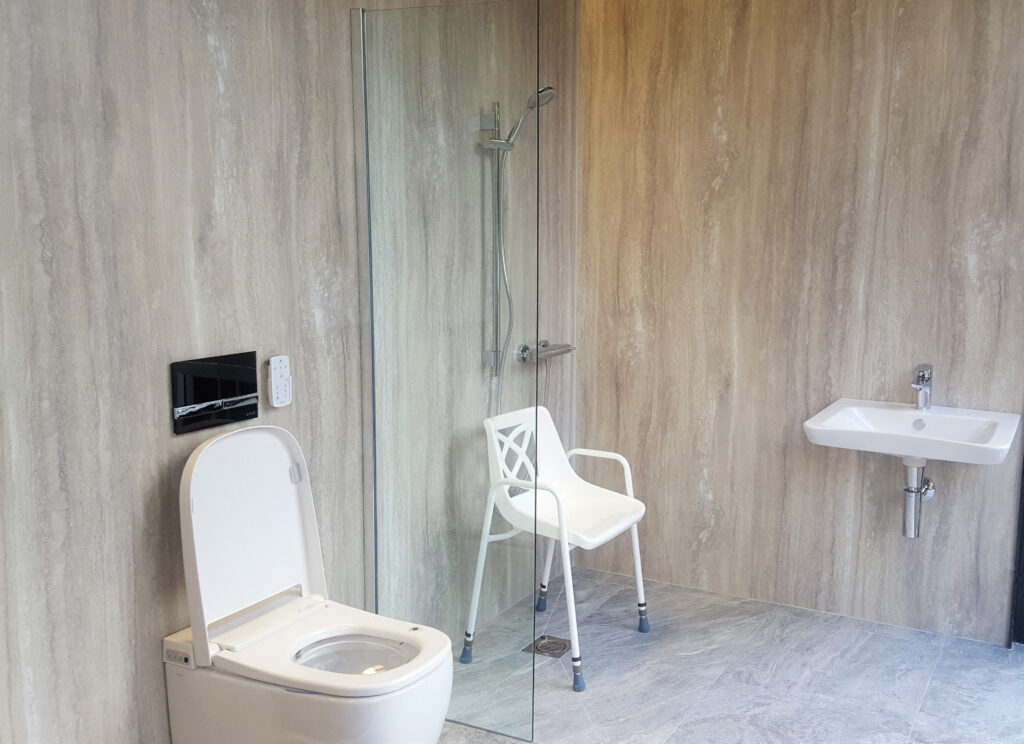
Anti-Slip Surfaces
Using anti-slip mats can be an effective method of making surfaces safer, for use in the shower or bath to provide a stable standing surface, or for stepping onto outside the bath or shower. Downsides to these mats are that they are not always easy to reposition, with the strong rubber suckers on the bottom, and people can still trip on the edges of these mats when moving around the bathroom.
Best Types of Flooring for Preventing Falls
With flooring being the main component in creating a secure and slip-free environment, we cover the main types of non-slip flooring for bathrooms, and their pros and cons:
Tiles
Tiles are the traditional choice for bathrooms, being hard-wearing and available in a diverse range of textures and styles. They are also compatible with underfloor heating systems.
The drawbacks to tiled floors are keeping the grout lines clean and free from mould, and paying premium pricing for non-slip options.
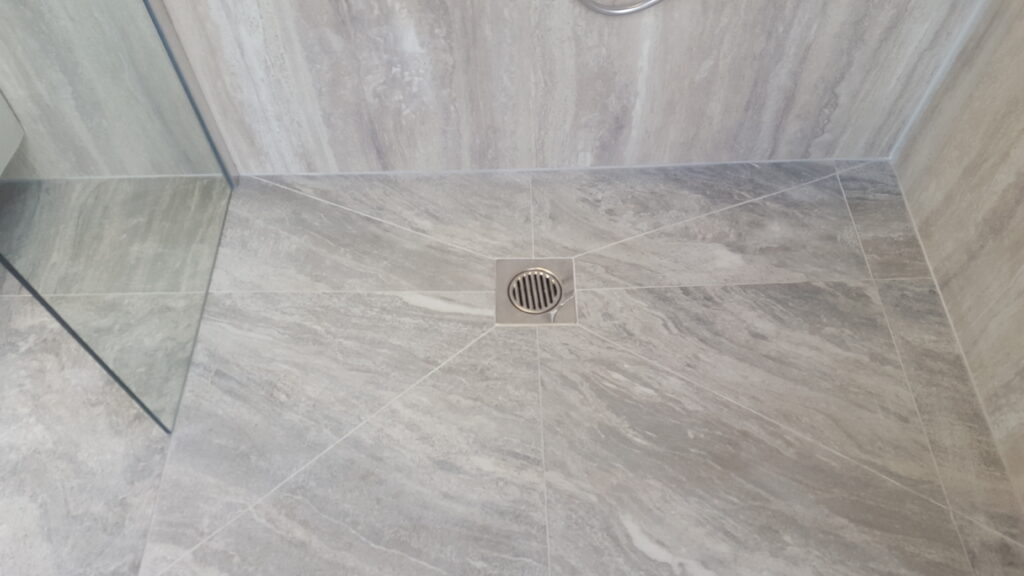
Vinyl
Vinyl is growing in popularity due to its cost-effectiveness, and greater range of finishes and styles now available. It has the advantage of creating an impermeable floor surface without joins, making it very easy to clean and maintain. Additionally, non-slip options are very affordable, which have an anti-slip coating added.
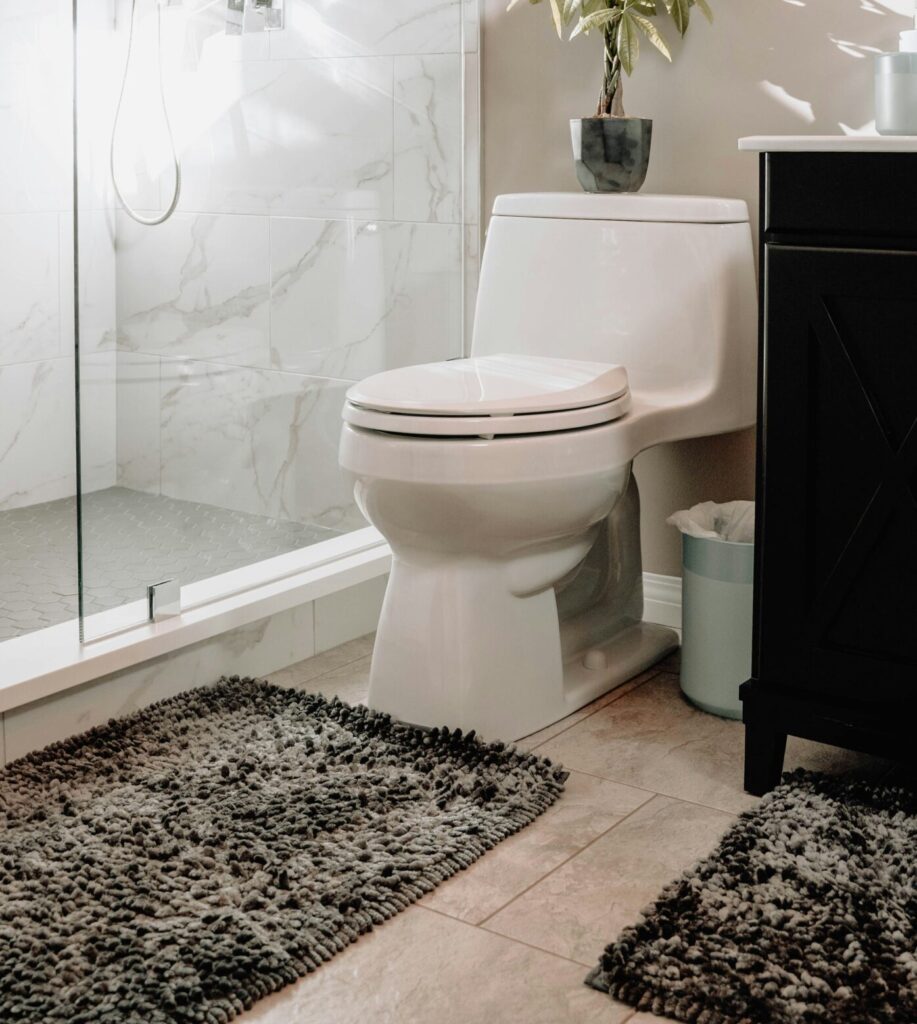
Conclusion
Preventing falls in the bathroom is a safety concern first and foremost, but is also about creating dignity and peace of mind for people with mobility challenges and their loved ones.
From low-cost options such as installing grab rails to more comprehensive solutions like converting your bathroom into a wetroom, there are a range of solutions to meet different circumstances and budgets.
Frequently Asked Questions
Q: What kind of flooring is best for preventing falls?
A: Non-slip vinyl flooring is a cost-effective, easy-to-maintain option. Textured, anti-slip tiles are also great but tend to be more expensive and may require more upkeep.
Q: Can I get financial help or funding for bathroom adaptations?
A: Depending on your location, you may be eligible for local government grants or funding for home adaptations. Consult an occupational therapist or your local authority for assessment and advice.
Q: What lighting improvements can help reduce falls?
A: Bright, even lighting reduces shadows and helps people with visual impairments see more clearly. Consider motion-activated night lights or LED strips for safe night-time bathroom trips, especially for those prone to night-time confusion or disorientation.
Q: What’s a ‘wetroom’ and how does it help with fall prevention?
A: A wetroom is a fully waterproofed bathroom with a level-access shower area, no steps, and often non-slip flooring throughout. It removes trip hazards, offers better wheelchair access, and reduces the risk of falls from climbing in and out of baths or showers.
Q: Is it safe to use bath mats?
A: Bath mats can help, but they must be non-slip and securely attached to the floor. Avoid loose or curled mats, which can become trip hazards. Wash them regularly to keep them free from mould or soap build-up that reduces grip.
Q: Can people with dementia benefit from bathroom adaptations?
A: Yes. People with cognitive impairment often benefit from clear layouts, colour-contrasted fixtures (e.g., white toilet seat on dark flooring), grab rails, and simple, intuitive equipment. Reducing visual clutter and using signage can also help with orientation and safety.
Q: Are there fall prevention alarms or alert systems for bathrooms?
A: Yes. Waterproof emergency pull cords, wearable fall detectors, or voice-activated alert systems can be installed in or near the bathroom. These systems provide peace of mind that help can be summoned quickly if a fall does occur.


